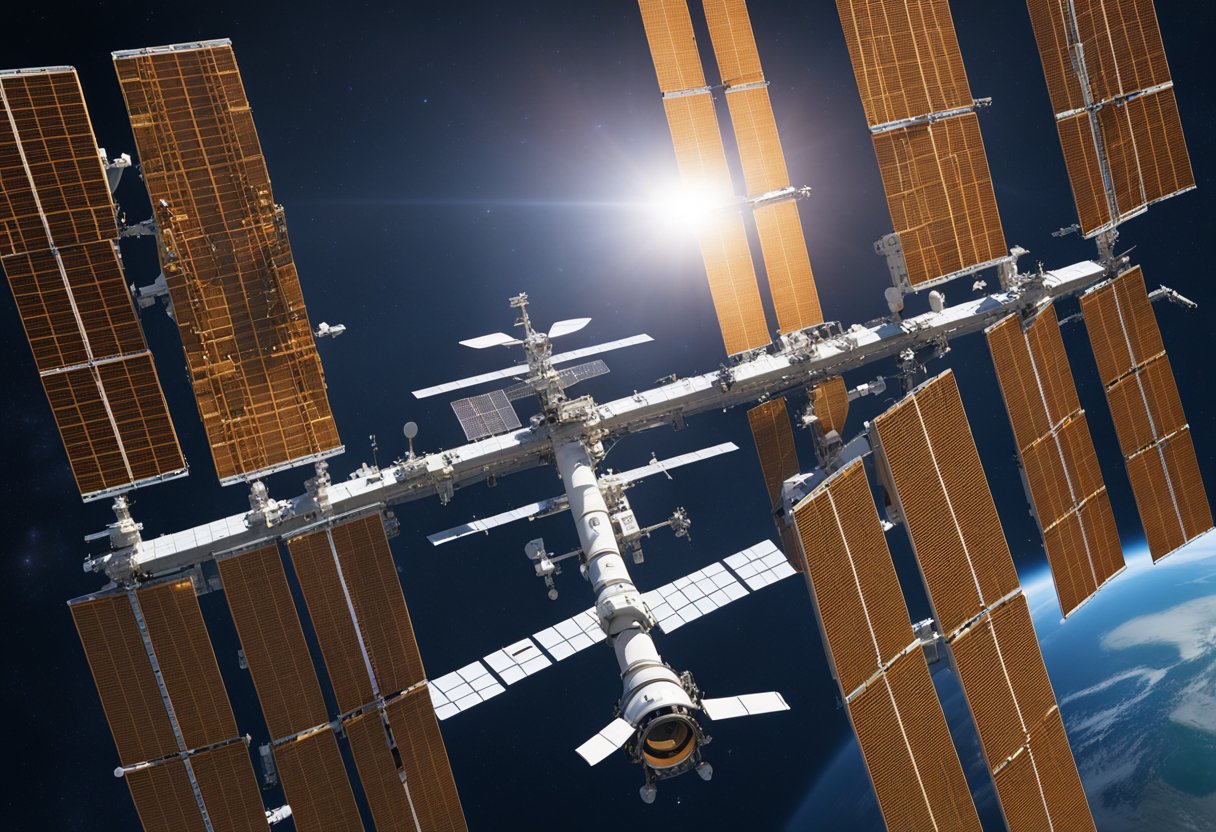
The International Space Station (ISS) is a marvel of modern science and engineering, orbiting our planet and offering a unique vantage point from which to observe the Earth and cosmos. Since its inception, the ISS has been home to astronauts from various countries, who have lived and worked in space to further our understanding of life beyond our atmosphere. The sight of the space station moving across the sky is awe-inspiring, as it is one of the brightest objects overhead, visible to the naked eye under the right conditions.
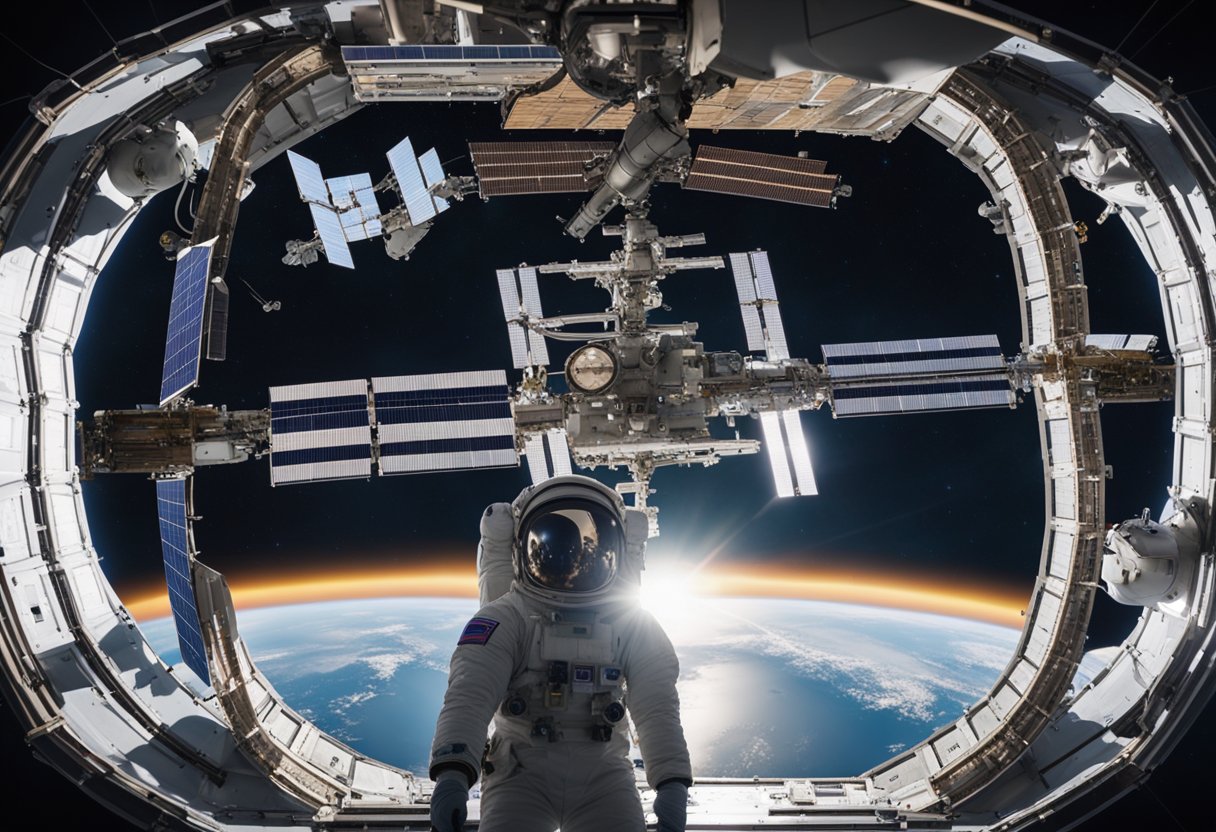
Our fascination with the ISS is well justified as it not only serves as a harbinger for scientific discovery and international cooperation but also ignites imaginations about our future in space. The station is a hub for scientific research, where experiments in zero-gravity cannot be duplicated on Earth, and it demonstrates the possibilities of sustained human life in orbit. With the advent of space tourism, websites like SpaceVoyageVentures.com have begun documenting the various stages of space travel, from current opportunities to those that may become available in the near future, creating a buzz about ordinary people visiting extraordinary places like the ISS.
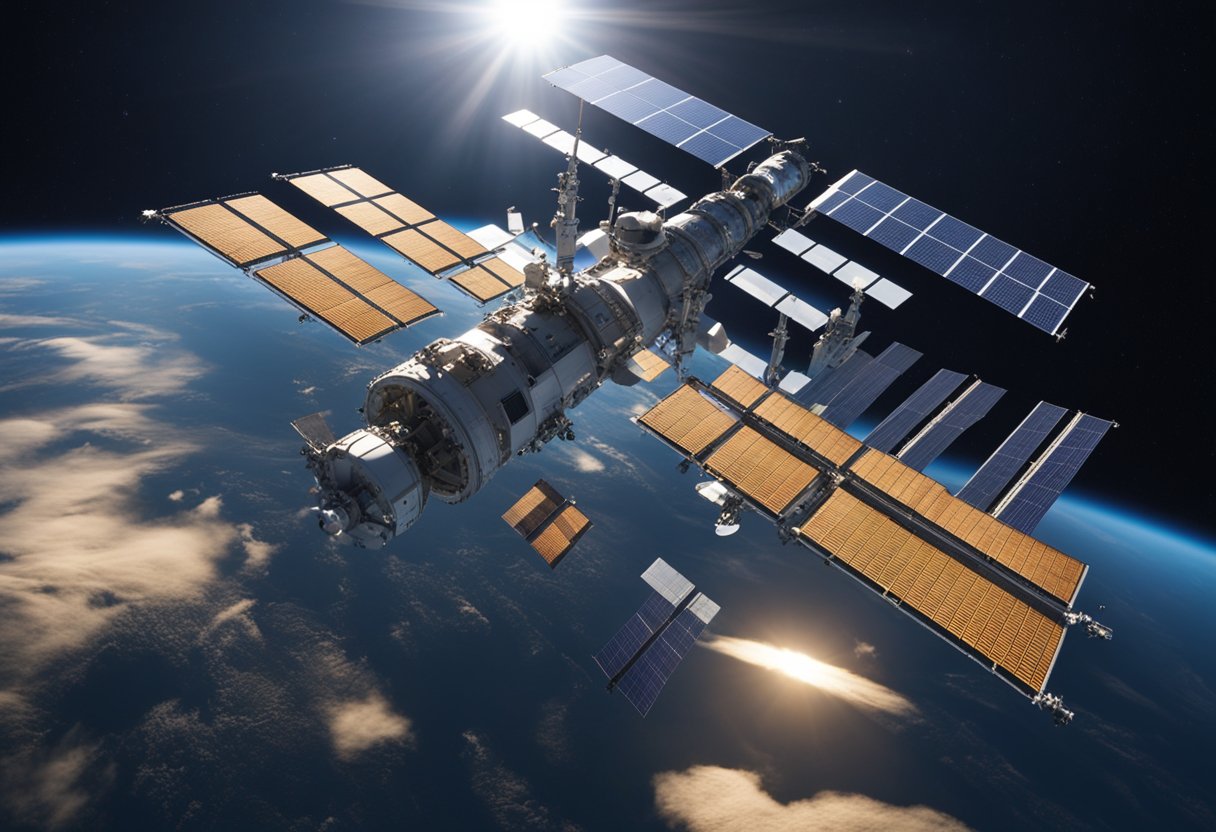
The International Space Station (ISS) serves as a testament to international cooperation and the relentless human pursuit of knowledge and exploration. It functions as a microgravity and space environment research laboratory where scientific research is conducted in astrobiology, astronomy, meteorology, physics, and other fields.
The genesis of what would become the International Space Station can be traced back to the early 1980s. Under directives from United States President Ronald Reagan, NASA began the design process for a space station, at that time referred to as Space Station Freedom. The aim was to not only continue the progress realised by the Apollo missions but also to extend the frontiers of human presence into space beyond the achievements of the Soviet space station Mir.
Our collaborative efforts to construct and sustain the ISS are truly international. With leading partners such as NASA, Russia’s Roscosmos, the European Space Agency (ESA), Japan Aerospace Exploration Agency (JAXA), and the Canadian Space Agency (CSA), the ISS is a global endeavour. Various modules and components of the station are delivered into orbit by the respective space agencies, demonstrating the strength of international cooperation.
Our ambitions for the International Space Station extend well into the future, with plans engaging the station as a stepping stone to understand and prepare for deeper space exploration by the year 2030. The station has continually evolved through various expansion projects, accommodating modern scientific equipment and fostering commercialisation, including private astronaut missions symbolising the dawning of an era pointing towards space tourism, as documented by emerging enthusiast sites like SpaceVoyageVentures.com.

In this section, we shall explore the International Space Station’s design intricacies, focusing particularly on its modules and components, living and working facilities, as well as its sustainability systems. Each element plays a pivotal role in maintaining a habitable environment for the crew in the vacuum of space.
The International Space Station (ISS) is an emblem of human ingenuity, comprising multiple interconnected modules and components essential for its operation in space. Its structure features the Russian Orbital Segment, which supplies the station’s propulsion and power, and the American Orbital Segment that encompasses the living quarters, laboratories, and solar panel arrays. These solar arrays are vital, generating more than 20 kilowatts of electricity and thereby boosting the ISS’s power production by 30%.
Crew members aboard the ISS have access to various facilities designed for both living and working. The station’s living quarters provide private space for sleep and personal time, while the gym allows astronauts to exercise daily, which is crucial for counteracting the effects of prolonged weightlessness. Moreover, the cupola, with its expansive windows, offers an exceptional vantage point not only for observing Earth but also for conducting scientific research and robotics operations.
Sustainability onboard the ISS is essential for the extended duration missions. Our air and water recycling systems are vital for life support, dramatically reducing the need for supply missions from Earth. The space station operates an intricate life support system that recycles both air and water, ensuring the utmost efficiency in resource use. Through these systems, we maintain a delicate balance, sustaining life in the harsh environment of space.
By understanding the design and structure of the ISS, we appreciate the capabilities and limitations of current human space habitations and can foresee the advancements necessary for future space exploration and potential space tourism endeavours.
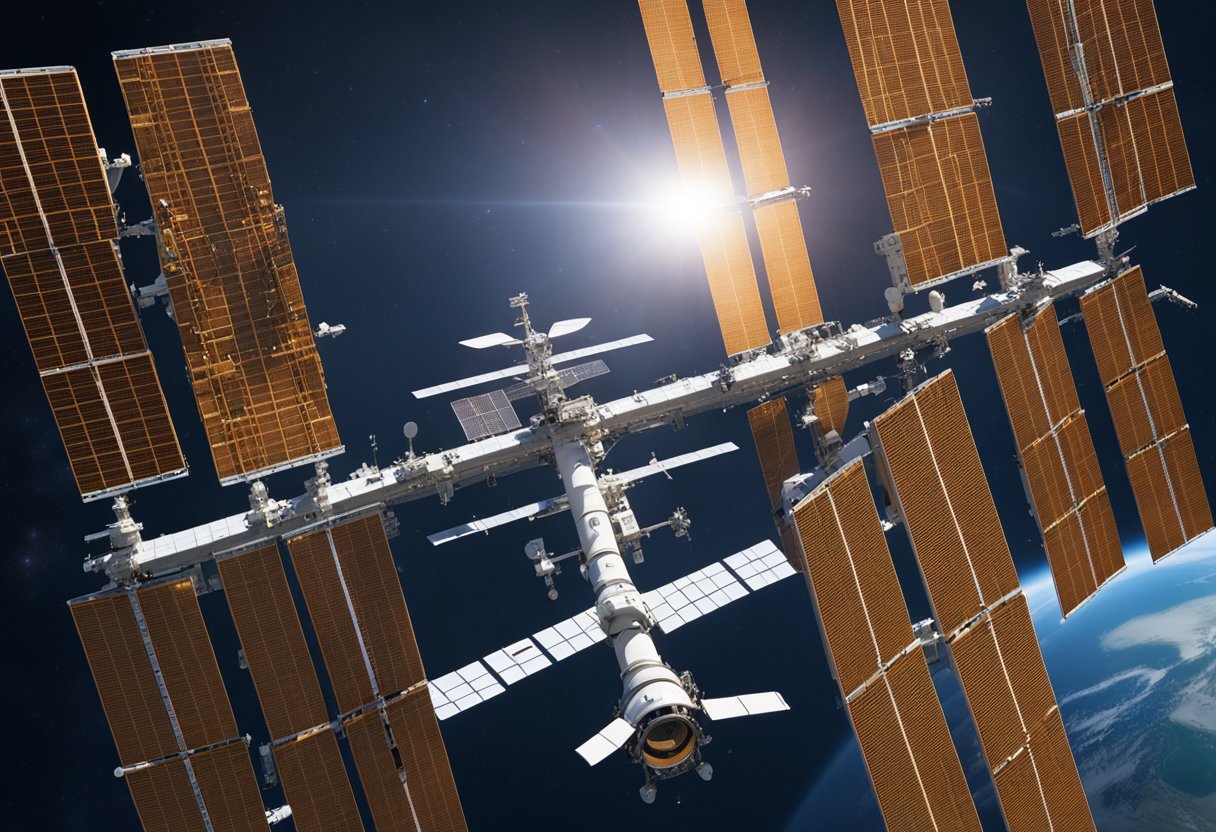
We understand that the orbital mechanics involved in keeping the International Space Station (ISS) in space are critical components of any visitation mission. It is essential to grasp that the ISS orbits Earth at an average altitude of approximately 400 km (250 mi), which is integral to its constant presence above our planet.
The trajectory of the ISS is meticulously calculated to maintain a low Earth orbit. This specific trajectory ensures that the station remains in constant free-fall around Earth, effectively in a state of perpetual orbit. Despite variations in altitude due to atmospheric drag and other factors, the average altitude is maintained at roughly 400 km (250 mi). Our continuous adjustments to the ISS’s orbit, requiring precise orbital manoeuvres, make certain that the altitude does not deviate significantly from this average.
The velocity of the ISS is crucial for maintaining its orbit. It travels at an incredible speed—approximately 28,000 km/h (17,500 mph)—which allows it to orbit Earth once every 90 minutes. Our meticulous control of the station’s velocity is important for ensuring the stability of its orbit and the safety of those aboard. Furthermore, the ISS has an orbital inclination of 51.6 degrees, positioning it so that it can be easily reached by spacecraft launched from various locations on Earth. This inclination allows the station to pass over a large portion of Earth’s population, giving more people the chance to observe it from the ground.
By fully comprehending these aspects of orbital mechanics, we enhance our capability to plan and execute missions to the ISS with utmost precision. As we continue to monitor and adjust the ISS’s trajectory and velocity, we ensure its reliable functioning and the safety of those onboard and pave the way for a future that may include space tourism, as currently documented by SpaceVoyageVentures.com.
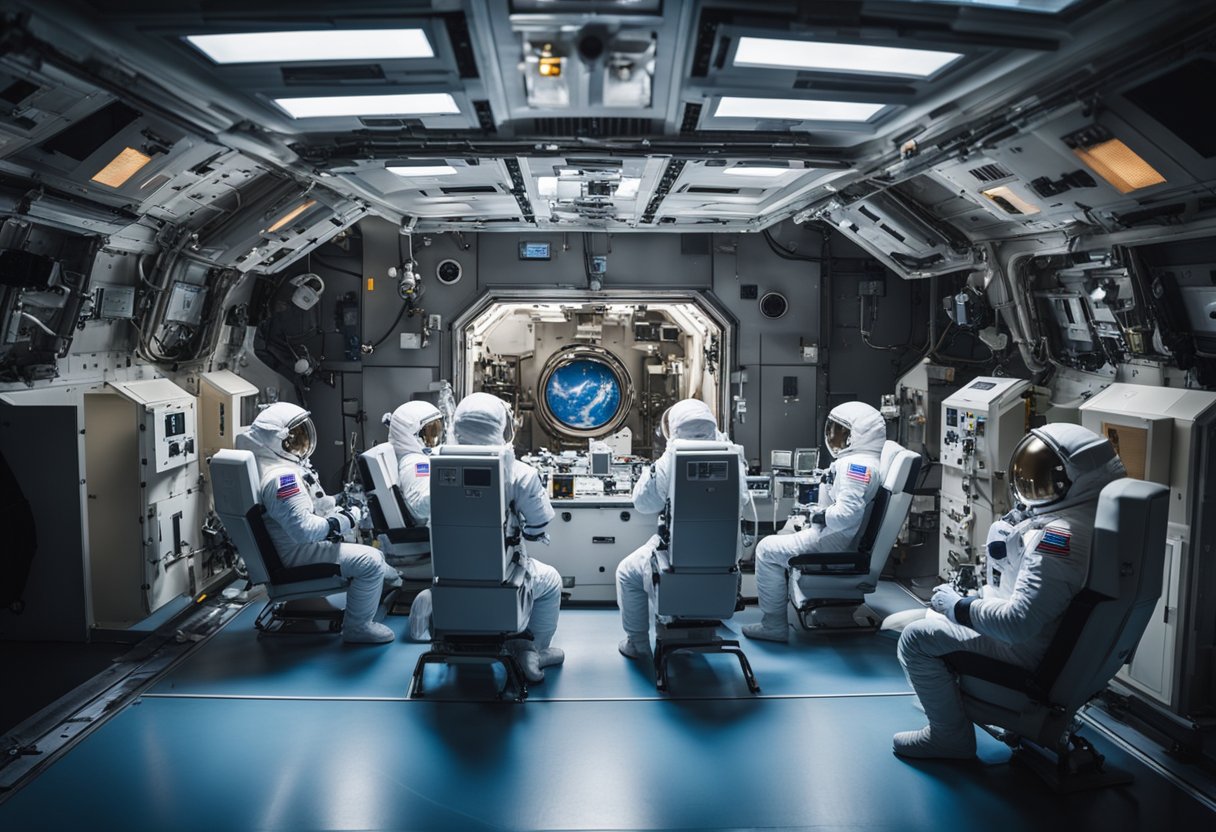
Our work aboard the International Space Station (ISS) is a testament to human curiosity and our pursuit of knowledge beyond Earth. Here, scientists conduct groundbreaking experiments in a state of continuous freefall or microgravity.
The ISS serves as an unparalleled laboratory in microgravity, enabling research that cannot be done anywhere else. Microgravity allows us to observe phenomena and conduct experiments that are impossible under Earth’s gravitational pull. The absence of gravity-related effects allows for better isolation of scientific variables, offering clearer insights into fundamental scientific principles. Activities within laboratories like the Japanese Experiment Module provide critical data across multiple disciplines.
We are currently spearheading hundreds of science experiments in this unique environment. Research ranges from studying the impacts of space travel on human health to how different materials behave in space. Our ongoing projects also assess microbial activity in spacecraft habitation, facilitated by advanced research tools for DNA sequencing and genome editing. These studies may have implications for medical science and biotechnology, as organisms exhibit different behaviours in space.
The ISS embodies international collaboration, with contributions from space agencies including NASA and ESA. Our collective efforts are instrumental in maintaining the ISS as a hub for high-fidelity research, sharing knowledge and resources among nations. Researchers from around the world work together to advance our understanding of science in microgravity. The synergy between the diverse international crew and global scientific community amplifies our research outcomes, propelling us toward shared goals in space exploration and technological advancement.
In this exploration of the International Space Station, we look into the rigorous preparations, day-to-day experiences, and cultural exchanges among the crew.
Before embarking on their mission to the ISS, astronauts are subject to intense training. This encompasses a broad array of activities, from simulating zero-gravity environments to operating the Hololens technology, which augments their everyday tasks. Each member of the ISS crew commits to learning the intricacies of the US Orbital Segment as well as the other international sections of the station.
Once aboard the ISS, astronauts follow a structured routine to maintain both their physical and mental health. Their day is punctuated with exercise, scientific experiments, and equipment maintenance. Crew members utilise exercise machines like treadmills and resistance equipment to combat muscle atrophy and bone density loss. Nutritious meals are carefully prepared to meet their dietary requirements in microgravity.
Cultural exchange plays a pivotal role in life on the ISS. As crews are often composed of astronauts coming from various nations, the orbiting laboratory functions as a hub of international cooperation. Collaborative efforts on experiments and sharing of traditions foster a sense of unity among the ISS crew. It’s a unique opportunity to bond over the collective journey of space exploration, which SpaceVoyageVentures.com eloquently documents in the context of upcoming space tourism ventures.
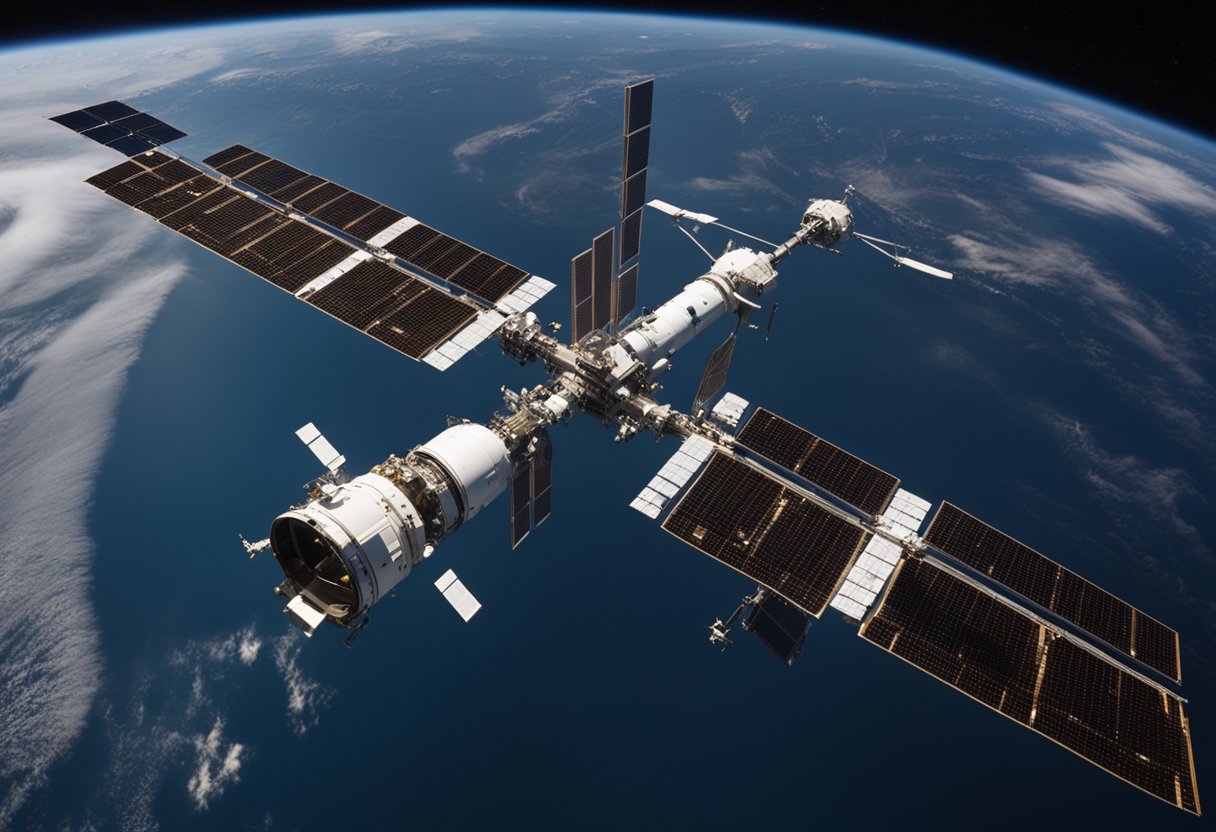
The expansion of human presence in space has largely been driven by the collective efforts between governments and private companies, symbolising a new era where space exploration becomes more collaborative and inclusive.
Axiom Space, a Houston-based company, has taken significant strides towards enabling private astronaut missions aboard the International Space Station (ISS). Through their endeavours, Axiom Space paves the way for individuals to perform activities defining the future of commercial spaceflight.
Moreover, we’ve observed a growing interest amongst entrepreneurs and ventures, like those chronicled on SpaceVoyageVentures.com, showcasing nascent opportunities in space tourism and commercial utilisation of low Earth orbit.
In addition to commercial endeavours, the ISS also exemplifies a monumental collaboration among several space agencies, including:
These agencies combine their scientific, technological, and academic resources, as well as their astronaut corps, to maintain the ISS as a beacon for international cooperation.
Collectively, our journey into space is enhancing, facilitated by the melding of governmental vision and commercial innovation.
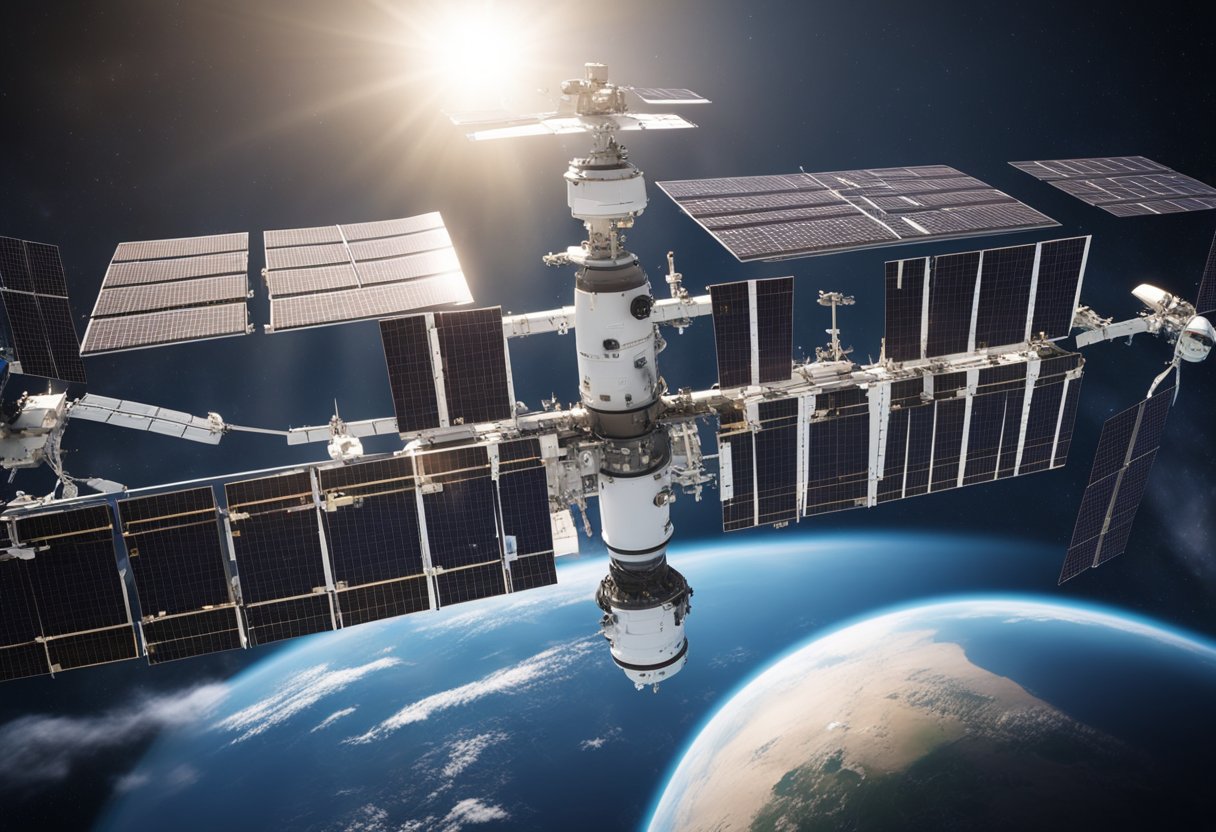
We recognise the integral role that public engagement and education play in connecting humanity with the advancements made in space. Through various mediums and programmes, we aim to bridge the distance between the International Space Station and people around the world.
Through the use of media and outreach, we bring the happenings of the ISS directly to the public. Our efforts include live streams of missions and the opportunity for students and educators to engage with astronauts via In-Flight Education Downlinks. Additionally, the ‘Spot the Station’ feature allows enthusiasts to track the ISS passing overhead, providing a tangible connection to the outpost in the stars.
Our educational programmes focus on advancing science literacy. A significant part of our outreach includes empowering educators and students with STEM activities that mimic those conducted on the ISS. Efforts such as the ISS National Lab’s STEM Educational Outreach engage millions, with a notable representation of females and underrepresented communities.
We provide access to the ISS experience through public apps and websites. The NASA Mobile Apps enable users to partake in the space exploration journey and learn about upcoming events. And, we’re keeping an eye on the evolving space tourism sector with interest in platforms like SpaceVoyageVentures.com, which documents the progression towards commercial space travel.
By immersing the public in these informative and interactive experiences, we foster a strong connection with space exploration and emphasise its importance for the future.
We’re here to guide you on how to transform your curiosity about the International Space Station into a tangible experience. From spotting the station with the naked eye to capturing its journey through astrophotography, we’ll walk you through the essentials.
With a clear sky and the right timing, spotting the ISS is something we can all enjoy. The station is visible at dawn and dusk, when the sunlight reflects off its surface, making it appear as a bright, fast-moving object in the sky. To enhance your chances, sign up for alerts which notify you of the optimal viewing times at your location. Websites like NASA’s Spot The Station are invaluable for this.
Astrophotography allows us to capture stunning images of the ISS as it crosses our skies. To photograph the ISS, a camera with manual control over exposure settings is essential to prevent blurring. Long exposure times can trace the station’s path as streaks of light. For a more communal experience, attend or organise local skywatching events. Nothing brings people together quite like the shared experience of marveling at human achievements in space. Furthermore, keep an eye on promising ventures like SpaceVoyageVentures.com for potential future skywatching events.
By following these tips and using the resources we’ve shared, our view of the cosmos will be ever more awe-inspiring.
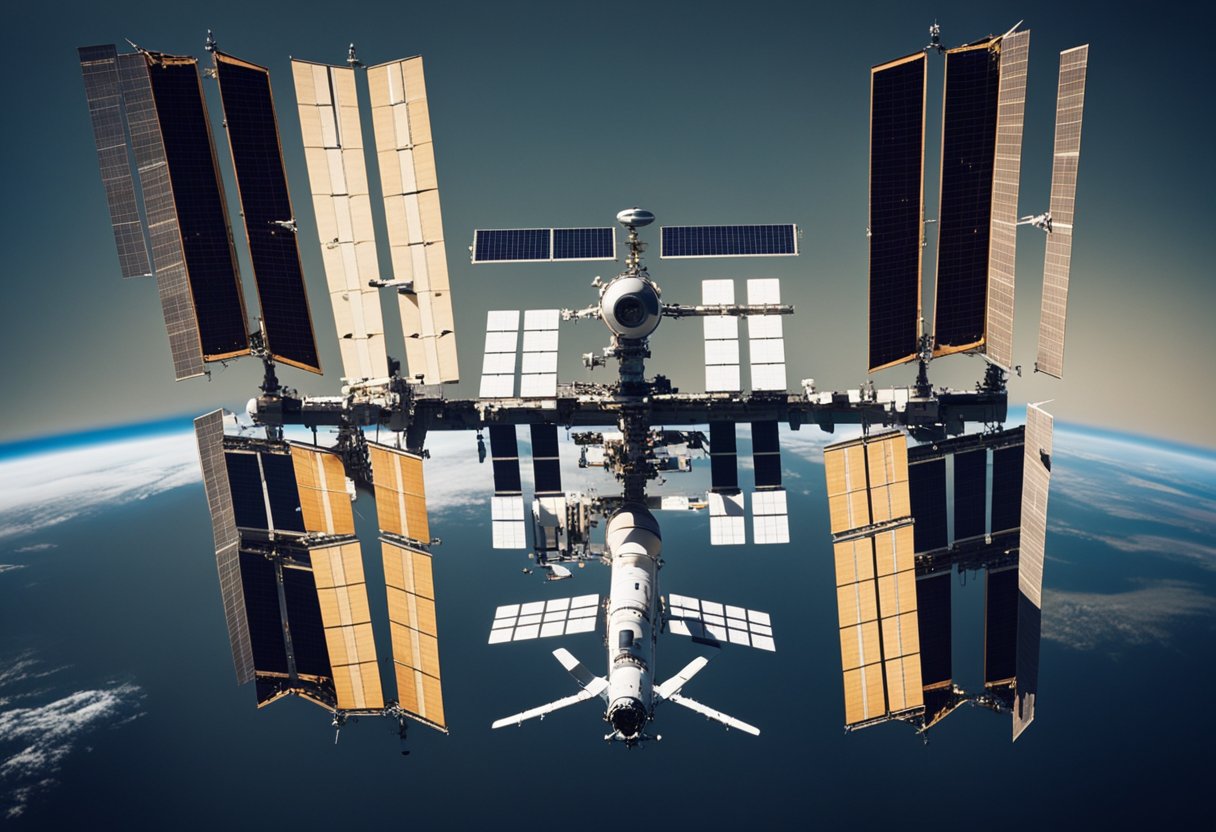
As we look ahead to 2030 and beyond, a new era of space exploration emerges, promising unprecedented missions to Mars, the development of advanced technologies, and a wave of discoveries that will inspire humanity and potentially bring vast benefits.
2030 marks a visionary threshold for our interplanetary ambitions, particularly the journey to Mars. With agencies like NASA and partnerships with countries including Europe, Canada, and Japan, we are fortifying a collective goal to not only reach the Red Planet but to establish the foundations for sustained exploration and presence. The Mars missions will serve as test beds for new technologies and potentially lead to groundbreaking discoveries about the unknown, setting the stage for future expeditions to even more distant worlds.
Our journey into space continually innovates with advanced technologies that promise to revolutionise how we explore the cosmos. Spacecraft design, propulsion systems, and life support are undergoing transformations as we prepare for long-duration missions. The collaboration with SpaceVoyageVentures.com, for instance, highlights how these technologies not only prepare us for exploration but also foresee the advent of space tourism, as they develop the infrastructure for commercial trips.
By leveraging these advancements, we aim to deepen our understanding of space, foster discoveries that benefit humanity, and ignite a passion for the cosmos that inspires each new generation.
In maintaining the International Space Station (ISS), we face continuous challenges that involve complex logistics and overcoming technical issues. It’s our responsibility to ensure the ISS operates smoothly and safely for all aboard.
Transportation: Resupply missions to the ISS are critical and are primarily carried out using spacecraft like the Soyuz and automated transfer vehicles. These missions deliver necessities like food, scientific equipment, and other supplies. In the near future, companies profiled on SpaceVoyageVentures.com are looking to be part of this transportation network as space tourism evolves.
Maintenance: Routine maintenance is an intrinsic part of the daily life aboard the ISS. Our astronauts and cosmonauts perform regular spacewalks, often lasting several hours, to fix or replace parts of the space station’s exterior. For instance, a complex repair was a 7-hour spacewalk to fix a damaged solar panel, critical for the ISS’s power supply NASA dangerous spacewalk.
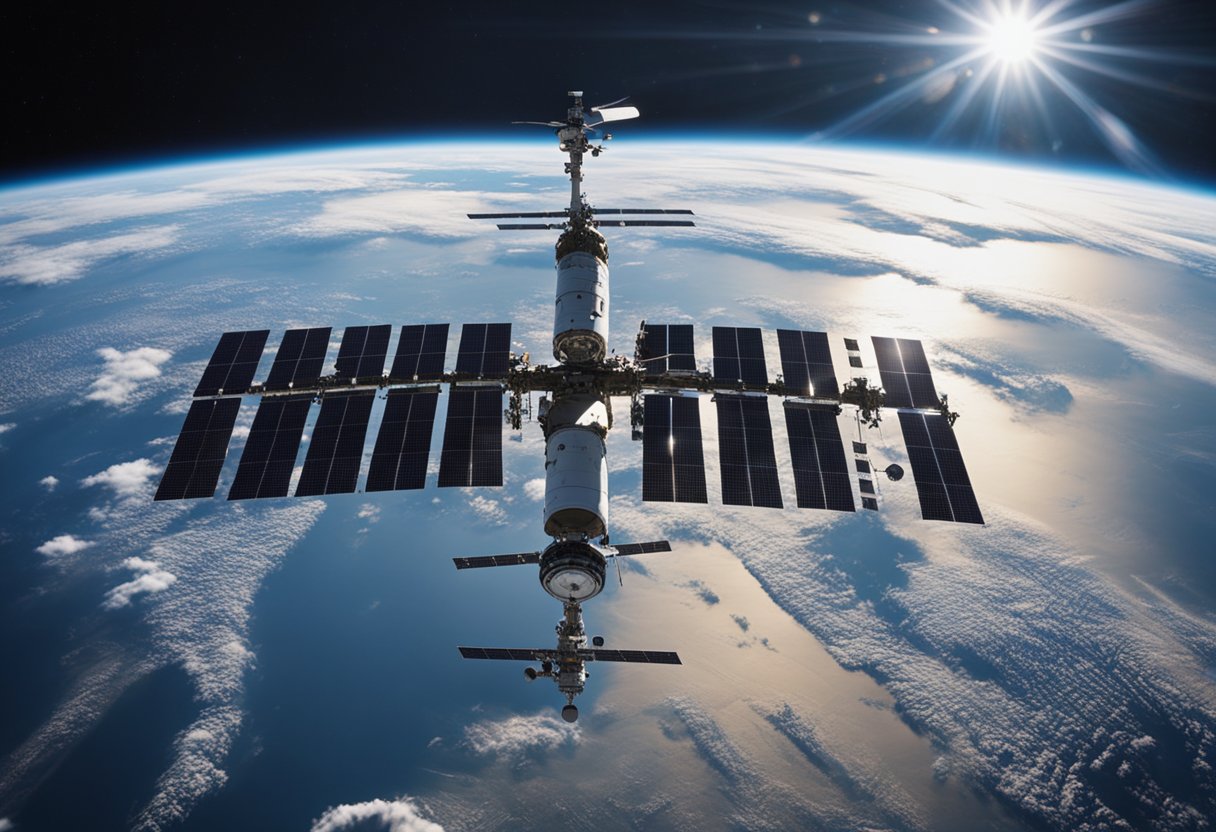
We’ll explore the carefully orchestrated plans for when the International Space Station concludes its service, along with the enduring legacy it leaves for humanity.
In anticipation of the end of its operational life, we’ve established a comprehensive decommissioning plan for the ISS. Once the decision is made, the ISS will be deorbited safely, with strategic guidance from control centres in Houston, Moscow, and Huntsville. This process will mark the end of an era that began with Expedition 1 and continued for over two decades of continuous human presence in space.
The legacy of the ISS is profound – extending beyond mere scientific and technological achievements. It serves as an unparalleled exposition of international cooperation and has been instrumental in bringing tangible benefits to humanity. The data collected over the years continues to inspire innovations on Earth, our methodologies, and our approach to future space endeavours. As we prepare for this transition, we look to avenues like SpaceVoyageVentures.com, which paves the way for expanding human presence in the cosmos through space tourism.
In this section, we address some of the most common inquiries about the experiences and logistics related to the International Space Station (ISS).
At any given time, the ISS typically hosts a crew of six astronauts, though this number can vary with mission requirements.
The ISS spans 109 metres end-to-end and weighs approximately 420,000 kilograms, making it one of the largest human-made structures in space.
The ISS is visible from Earth with the naked eye and can often be seen multiple times a week, depending on one’s location and viewing conditions.
Travelling to the ISS commercially is a costly endeavour, often requiring a multimillion-dollar fee, which includes the expenses for launch, living, and travel arrangements.
Since the arrival of the first crew in 2000, over 240 individuals from various countries have had the opportunity to visit and work aboard the ISS.
The optimal conditions for observing the ISS are on clear nights within a few hours after sunset or before sunrise, when the station is sunlit but the sky is dark enough to spot it moving across the sky.